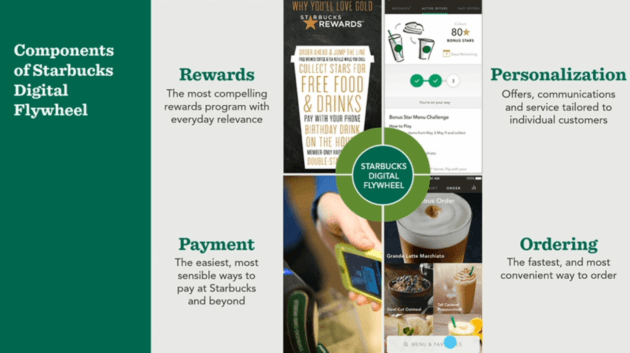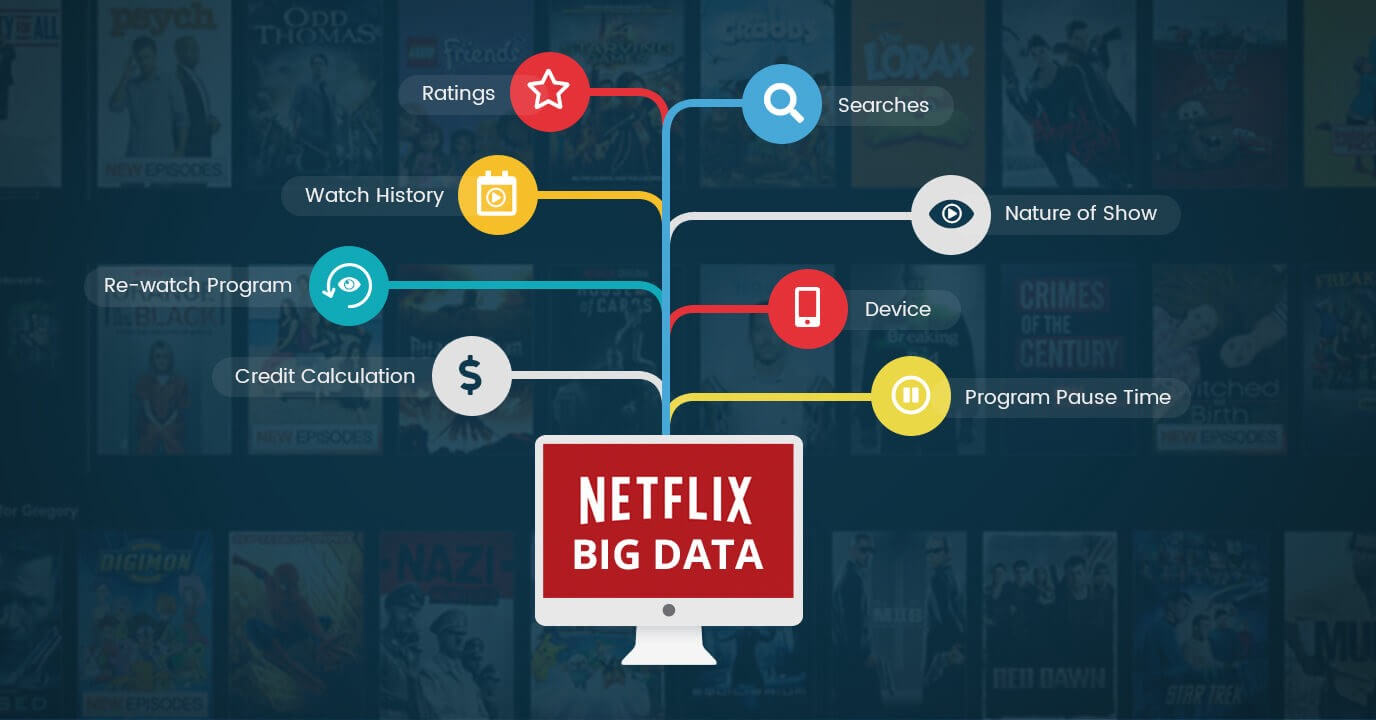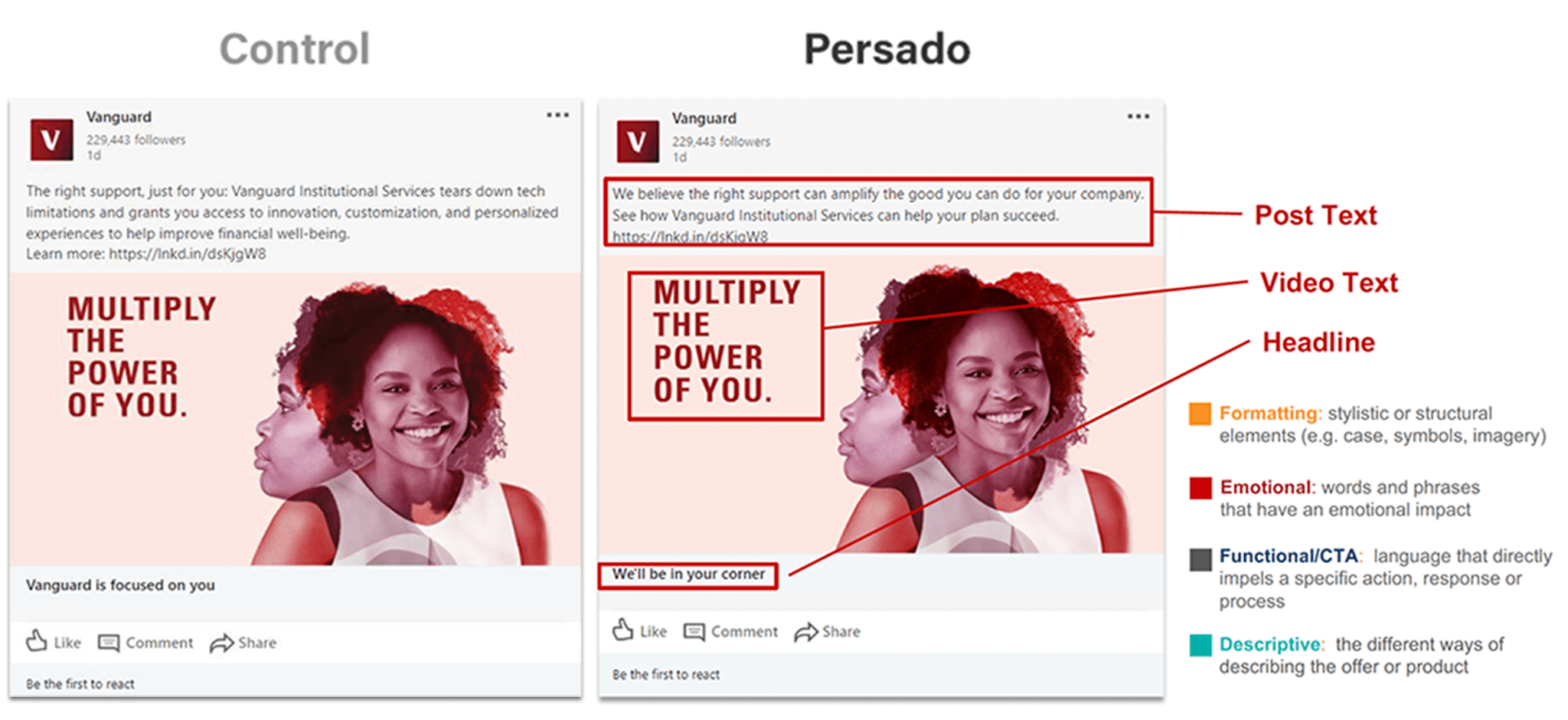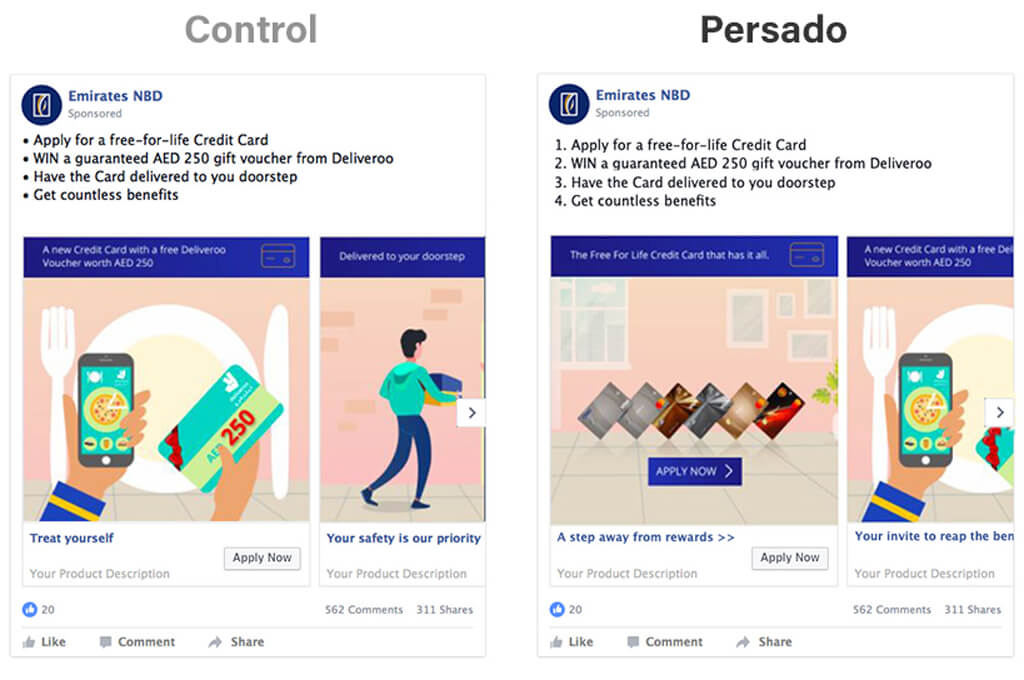July 6, 2023
AI in Marketing: Benefits, Use Cases, and Examples
By Liza Colburn

This post was published on June 16, 2022 and updated on July 6, 2023
Warm, personable, convincing — those adjectives may not be the first that come to mind when you think of artificial intelligence or AI. But, AI and human collaboration can outperform human intuition alone in creating and selecting digital content that connects with customers. According to a recent Persado survey of 250 digital marketers in retail, experienced marketers only chose the highest-performing digital marketing messaging 30% of the time.
AI in marketing has many uses. In addition to fine-tuning content, it can learn customer preferences, quickly pick up on changes in consumer behavior, and offer them relevant recommendations. It can predict customer spending patterns, perform market research, and assist customers in real-time when live agents are unavailable. Artificial intelligence and marketing is a partnership that makes sense, given the thousands of data points marketing teams could use to improve their content. The Persado Motivation AI Platform, for example, leverages over 1.5 billion customer interactions from 150 million US customers to deliver digital marketing messages that motivate customers to engage and act.
In this post, we’ll look at what AI marketing is, the four types of AI in marketing, and how companies are using AI to improve their marketing efforts and motivate customers to act.
What is AI in marketing?
AI in marketing is the application of machine learning, deep learning, natural language processing, and other artificial intelligence technologies to solve key marketing challenges. As customers demand high levels of relevant, meaningful personalization and brands reorganize around a customer-centric operating model, AI and machine learning become critical tools needed to develop marketing creative, improve customer loyalty, and drive personalization.
AI-based marketing is an experimental, iterative process. Marketing teams must define narrow objectives and measure the analytics for each one to determine whether to change their approach.
The foundation of AI technologies in marketing
In short, machine learning and deep learning are fundamental subsets of AI.
What is AI?
AI is when computers use algorithms and large data sets to go a step further than traditional computing models of if-then, rules-based programming. As the algorithms acquire more data, the system “learns,” trains itself, and improves as the data set grows. The system can then use technologies such as natural language processing, natural language understanding, and natural language generation to create personalized consumer content (as opposed to merely analyzing it and providing recommendations to humans who will then take further action).
What is machine learning?
Machine learning marketing technology includes mining structured and unstructured consumer data from multiple channels; e.g., email messages, videos, photos, and social media postings; predictive modeling for marketing campaigns, customer churn, and customer lifetime value; and granular segmenting and targeting algorithms that can return recommendations for the most relevant consumer features as they relate to purchasing habits.
What is deep learning?
Deep learning focuses on targeted components, such as image classification, facial recognition, and voice recognition. Each of these ties into both AI and machine learning tools for marketing; e.g., identifying which users prefer certain banner ads or words and then auto-creating that visual content, or voice “chatting” with customers to determine their needs vs. wants.
Why CMOs should care about AI in marketing
Global digital marketing spend grew 17% last year to reach over $389 Billion. Customers are already overwhelmed with the growing digital communications overload and as a result 71% expect brands to personalize their experiences. McKinsey refers to digital personalization at scale as “Marketing’s Holy Grail”.
Check out The CMO’s Guide to Achieving Impact With Generative AI.
AI offers CMOs and their teams the ability to deeply understand consumers’ ever-changing wants; confidently create targeted, personalized content that resonate; provide predictive customer service; and generate the growth C-suites expect. Today, a machine can understand what stories to tell, what emotions to convey, and how to combine them into the highest-performing digital marketing message that will systematically drive impact across every channel at every customer touchpoint.
“I believe deeply — to my bones — that the most important development in the history of marketing is machine learning…it will fundamentally change our relationship with consumers.”
— Kristin Lemkau, JPMorgan Chase CMO
AI allows marketing teams to quickly analyze vast amounts of customer data to predict a customer’s needs and wants and improve the customer experience. Advanced AI systems allow a brand to better understand their customers and understand how to better communicate with them. With this deeper insight, marketers can deliver the right message to the right customer at the right time, and motivate them to engage, even as consumer behaviors change.
Learn how consumer behavior towards financial services shifted and how digital marketing messaging around customer acquisition stayed steps ahead with the help of AI based on real Persado digital marketing campaign data.
What are the 4 types of marketing AI technologies?
The four types of AI-based marketing technology are stand-alone automation apps, integrated automaton apps, stand-alone ML apps, and integrated ML apps.
Stand-alone automation apps
Tech in this category tends to serve a single purpose and is often not integrated with other AI technology. Examples include automated social media publishing tools, or simple “Thank you” messages that customers see when they sign up for a download or newsletter. Unlike more advanced forms of AI, stand-alone automation apps don’t “learn” from their interactions.
Integrated automation apps
Integrated automation apps include some type of logic-based rules. A CRM that assigns labels to customers based on their behaviors would be an example of integrated automation.
Stand-alone ML apps
This technology supplements human efforts by learning from its interactions. The most common use case for this type of automation is chatbots that are able to recognize when to transfer a conversation to a live agent.
Integrated ML apps
Integrated machine learning apps don’t require daily input from human users. One of the most well known integrated ML apps is the Netflix recommendation engine — it analyzes user behavior and viewing history to offer recommendations.
Use cases for AI in marketing
These are some of the ways companies are using AI to elevate marketing performance:
AI can transform the creative process
Gavin Miller, Vice President and Fellow at Adobe Research noted that the demand for creativity and creative content will only continue to rise, but the quality of that creative output is constrained by people, time, and how creative humans can be. Marketing leaders have a wealth of data at their disposal from which to gain key insights to drive powerful customer experiences that reinforce their brand values.
AI for creative development turns that problem into a strength, taking large amounts of data, learning from it, and working with humans to generate the best creative results.
85% of CMOs know their organizations’ future business success hinges upon creativity and big ideas that build the brand and create an emotional connection, according to a survey from Dentsu Aegis Network. Only 54% of these same CMOs believe they deliver on that promise. Another 84% said data collection, management, and analytics that drive consumer insight are important for their success, yet only 49% believe they deliver well in this area.
AI helps bridge the gap between awareness and action.
Example: Persado analyzed three years of a retail client’s data spanning over 2 million messages and almost 100 million customer touch points to pinpoint the most powerful concepts and messages for this client’s customer base. Those insights informed the entire creative process and guided how the creative agency of record planned and developed one of their largest campaigns of the year. Persado’s AI had a seat at the creative table from the beginning of the process, fundamentally changing how the creative team developed the creative direction and generated content–from in-store catalogs to radio ads, and from web banners to Instagram stories.
The goal isn’t to replace human creativity but to enhance it, make it more sophisticated, and take it to the next level.
AI adoption can have a lot of organizational barriers. Discover how to get past them with these tips for overcoming function-level barriers to AI.
How can AI help achieve content personalization at scale?
Marketing leaders are constantly challenged with delivering the right message at the right time to the right customer, and that’s where AI language technologies such as natural language processing (NLP), natural language understanding (NLU), and natural language generation (NLG) come into play.
AI marketing technologies such as NLP and NLG help marketing teams with content personalization and creative messaging at scale and at the rapid pace necessary in a digital world, yet retain the human connection consumers demand and the consistent brand voice marketers require. These approaches marry technical automation and sophistication with a human touch. Computer researchers and academics tend to view NLP as an umbrella field of AI that includes NLU and NLG.
To better understand how they work and what they bring to marketing, however, it’s helpful to look at each separately.
Natural language processing technologies explained
Essentially, NLP algorithms are the text or voice input “readers,” while NLU and NLG are the “understanding” and “writing” components, respectively. Everything starts with NLP and then flows into increasing levels of the nuanced complexity that is human communication.
What is natural language processing?
Natural language processing is a convergence of computational linguistics and computer science. It is the primary method to analyze human language and break it down into smaller components, such as part-of-speech tagging, word segmentation, terminology extraction, speech recognition, or lexical semantics.
For example: Siri has to understand several aspects of what someone asks it to do. “Siri, where’s the nearest bank?” must be parsed so it understands what a “bank” is, comprehends that the command is a question, accesses geo-location, compares your location with the location of the closest bank, and then generates a response. As long as Siri doesn’t have problems deciphering word pronunciation (heavy accents, background noise, or speech impediments can present problems), then it will likely reply with an accurate response, thanks to natural language generation.
What is natural language understanding?
Natural language understanding is the next step in the NLP process that leads to NLG. Once a machine analyzes human language at the “parts” level, the algorithm attempts to “understand” the communication’s meaning. That includes trying to interpret the sender’s emotion. NLU seeks to answer the question, “what is the intent of this message?”
What is natural language generation?
Natural language generation moves NLP from syntax analysis into the world of semantics: it produces meaning through content creation. The algorithms create words, phrases, and content based on processes similar to human methods, such as determining what information to include, logically ordering information presentation, using the appropriate grammar, and choosing the “right” verbiage.
Learn More: The Business Impact of Natural Language Generation
How can AI improve copywriting?
Rising consumer expectations for personalized experiences mean CMOs and senior marketers face increasing pressure to create content quickly and at scale. Copywriting that meets these consumer preferences demands human creativity but is notoriously difficult to scale.
“Even the most talented copywriters do not possess AI’s data-gathering and analytical capabilities.”
— Kat Dessenon, Persado Vice President of Campaign Management
It’s now possible to use linguistic science, machine learning, and natural language generation to guide the art of copywriting in a scientific way and create messages that are on brand every time. AI gets CMOs and their teams closer to the right words at the right time at scale.
Example: Persado trained its AI platform to detect emotions, which is one of the most difficult language elements to master. This breakthrough in AI technology involved much more than simply tagging individual words; the AI system categorizes phrases and the various components of language so the same components can be reimagined and reassembled to deliver more compelling messages. The system matches brand voice and audience impact analytics to produce optimal copy throughout every consumer touchpoint.
Persado uses AI to help automate some aspects of content creation to increase efficiency, allowing teams to focus on more strategic tasks that require human judgment. This is the biggest benefit to businesses–AI’s purpose, in marketing and in general, is not to replace the human workforce, but to free up time for work that computers can’t yet do on humans’ behalf.
The larger the organization, the more pervasively AI can be used. Assuming a large, relevant base of content exists, CMOs and their senior marketers are more likely to get more precise and relevant output with AI. A small business that sends email once a week won’t have as much benefit as a larger enterprise that can leverage thousands of data points.
AI-driven chatbots can increase multichannel engagement and improve customer service
The technology that powers AI chatbots has become so sophisticated that some customers may not even realize when they’re chatting with a bot instead of a human. Chatbots can be deployed across multiple platforms, including Facebook and WhatsApp, to field and respond to routine inquiries. That means customers get the fast response times they expect, which can greatly increase brand loyalty.
With AI chatbots, customer service teams can handle a greater volume of customer communication, resolve simple issues without live agents, and ensure a cohesive customer experience across all platform interactions. AI chatbots allow brands to connect with customers 24/7 across more digital channels.
AI can improve email marketing engagement
Email marketing is digital marketing’s workhorse. It’s inexpensive, easy to deploy, leverages first-party data, and has proven reliable over the past two-plus decades.
The Data & Marketing Association reports 73% of consumers say email remains their preferred marketing channel.
Today’s marketing teams need a targeted, personalized approach for email subject line optimization that is more captivating than: “Hi, we noticed you left something in your cart.” They need to know the words they choose are the exact right words so their customers take notice and don’t instantly hit the delete button.
Machine learning and AI have helped email marketing campaigns evolve beyond this spray-and-pray approach. Everything from generating personalized email body content and optimal email subject lines can now be improved with AI and machine learning.
“What AI does or what we want it to do…is it allows you to scale so much faster than doing that champion/challenger test. Because champion/challenger will work very well when you are in the early stages of your development, but it will really start to slow you down at a later stage.”
— Ben Blake, CMO, Hotels.com
How Persado Uses AI to Improve Email Subject Lines and Body Copy
Persado’s marketing technology and AI allow clients to test a myriad of marketing content and determine the best predicted messages, but not in a way most marketers are accustomed to doing it. A typical marketer uses A/B testing to compare control copy vs. a piece of test copy. A/B tests are useful to show which of a small handful of options performs best, but A/B tests are notoriously hard to scale and don’t have any memory from one test to the next.
It’s difficult to pinpoint the absolute best possible variation of content such as copy on a webpage using A/B testing because you literally have to test each possible combination against every other combination, sequentially, and over time. Do superlatives work best and if so, which one do you use–Best, Ultimate, or Top? You’d have to test Best vs. Ultimate, then Best vs. Top, then Ultimate vs. Top, and so on. Is it better to use the emotion of Gratitude (We appreciate your loyalty) or Achievement (You earned it!) and, once that is decided, which phrase is the best option? A/B testing becomes untenable as a primary testing option at scale.
Let’s say you determined that “You earned the ultimate secret bonus” was the best headline option in an A/B test. Using A/B testing, you still wouldn’t know why or be able to replicate it or transfer the learning to another channel such as social media ads. Because A/B tests have no memory from one test to the other, after a year of optimizing all your content, you’re no smarter about which language elements work and which are a waste of time. Persado uses AI, machine learning, and experimental design to compare many different elements at the same time to determine which elements work, why they work, and then put the best messages into production to drive more engagement.
The Persado platform uses natural language processing algorithms to “read” messages and break them down into their component parts then compares and analyzes that copy against potential high-performing variations. The platform draws insight and “memory” from a unique knowledge base of over 1 million categorized words. The AI system then proposes variations that incorporate many different language elements, including the specific word or phrase used, the emotion of the words used, the role and placement of emojis, and the effect of all caps, to name a few. The platform then uses natural language generation AI to take all the learning and analysis into account and “write” new and more effective messages that outperform the control message.
“The platform then uses natural language generation AI to take all the learning and analysis into account and “write” subject lines that outperform the control subject line.”
— Frank Chen, PhD, Persado Natural Language Processing Scientist
AI can deliver personalized web experiences
While marketing teams may want to understand what users think of their website, few have the time to do so. AI, however, can analyze every user website interaction — the content users find most engaging, how they move through a site, and how long they spend on a site. Google Analytics can deliver similar data, but AI can also act upon it, showing website visitors the content that’s most relevant to their interests.
AI can automate media buying and campaign management
Managing pay-per-click campaigns is complicated, and marketers need some amount of training to understand the process. Furthermore, even if a marketer is well versed in Google Ads, their skills don’t necessarily translate to other platforms. AI can manage most of this process across any platform, using machine learning to optimize ad bidding and spending, campaign messaging, and keyword research.
AI can power dynamic pricing and demand forecasting
During the early months of the COVID pandemic in 2020, “supply and demand” took on a new meaning, with many retailers selling out of necessities. Algorithms that can forecast demand and dynamically adjust pricing may be the solution to stock depletion.
AI can personalize language in the online shopping cart
Persado Dynamic Motivation uses the brand’s session data along with the Persado Motivation AI knowledge base to deliver personalized language in the online cart to inspire each customer to complete their purchase. E-commerce brands that provide an online cart experience that “speaks” to each customer see a 3-5% increase in online revenue. Qualified retailers looking to use Dynamic Motivation in the online cart will receive a 60-day free trail. No commitments. Request trial.
What are the benefits of AI in marketing?
Using AI in marketing helps marketers gather data from multiple sources and get actionable insights about their customers. These are some of the specific ways AI benefits marketing teams:
Increased efficiency
Automating processes frees up more time for marketers to create content, strengthen brand messaging, and develop campaigns. That means teams become more efficient overall, with fewer administrative and manual tasks taking up valuable time.
Error reduction
With integrated AI technology, teams have fewer opportunities for error. For example, AI can feed customer data into your CRM, so no manual data entry is required, and that means no keystroke errors (or lost email addresses or incorrectly spelled names). AI also has baked-in security features that protect data from interception.
Greater personalization
We mentioned the Netflix recommendation engine earlier. Consider whether Netflix would still exist today if its recommendation engine were off the mark — personalization is essential in this context and in marketing, in general. Only AI can collect and analyze detailed data quickly enough to generate personalized recommendations and content for users moving through a website or app.
Improved decision-making
Because AI tools are continuously collecting data, marketing teams don’t need to wait until a campaign ends to make decisions — they can act on real-time data in the moment, and then continue analyzing data to evaluate the impact of their decisions.
Increased campaign ROI
With AI marketing, teams can see greater ROI for every customer interaction. That’s because AI helps marketers create customized content, optimize timing of messages, and measure the impact of their interactions.
8 real-world examples of AI in marketing
So how are companies achieving results with AI marketing? We’ve got some AI in marketing examples to share:
Starbucks uses predictive analytics to increase average order value
Starbucks collects data from users of its loyalty card and mobile app to enhance the user experience and deliver personalized recommendations. Based on the data collected, Starbucks’ AI software recommends products as a user approaches a store location, which has led to an increase in the value of customer orders.
Michaels uses AI to achieve personalization at scale
Michaels, the largest arts and crafts retailer in the United States, partnered with Persado in search of a better way to personalize messaging. The company had been collecting data on its users but didn’t have a strategy about how to use that information to form emotional connections with its artist and “maker” customers.
Persado’s AI language generation technology landed on the ideal subject lines and SMS content to drive engagement, increasing clicks on SMS campaigns by 41%.
“The degree to which the AI platform allows Michaels to understand the language that resonates best with each Maker is incredible…the language speaks to our customers on a deep, personal level. The fact that we do this regularly and at scale is helping to build upon the high levels of trust we’re earned with our Makers throughout our history.”
— Sachin Schroff, CP of CRM, Loyalty, and Marketing Technology
Unilever uses AI to perform market research
Unilever, parent company of Ben & Jerry’s, gathered insights from multiple AI data centers and discovered that at least 50 songs in the public domain mention “ice cream for breakfast.” Based on this finding, Unilever launched several cereal-flavored ice cream varieties.
Netflix uses recommendation engines to drive engagement
Still one of the best examples of AI in marketing, the Netflix recommendation engine measures several user metrics to determine which programming to recommend. Data points collected include an individual’s ratings of previously watched programming, whether a user watched an entire TV series, and whether a user paused, rewound, or fast-forwarded during a show.
Vanguard used AI language generation to boost conversion rates
Vanguard was looking for a way to improve visibility of its Vanguard Institutional posts on LinkedIn, the only platform on which the brand advertises. The company partnered with Persado to achieve this objective.
Persado’s AI native language platform was able to optimize each post for maximum impact, boosting conversion rates by 15%.
Emirates NBD uses AI to optimize ad creative
Emirates NBD, a digital-focused bank, needed help personalizing offers for the right customer, at the right time, on the right platform. To do this, they enlisted the help of Persado.
Persado ran an experiment and found that its AI-generated ad increased engagement by 133%. Overall, Persado’s expertise and technology increased leads for the bank by 177%.
eBay uses AI to increase email marketing performance
Online marketplace eBay uses AI natural language processing to optimize its emails. Since incorporating this technology, eBay’s open rates have improved by 15.8%, and clicks have increased 31.2%.
Chase Bank uses AI to optimize content
Chase Bank was looking for a way to make its marketing language more conversational. The bank partnered with Persado, which employed machine learning to make Chase’s subject lines and content more relatable.
“I’m super passionate about this. CMOs need to skill up in AI and tech if they’re going to drive growth. Our partnership with Persado is a big one to help make marketing smarter AND more customer-focused.”
— Kristin Lemkau, CEO, Wealth Management at JPMorganChase
AI marketing predictions
So what can we expect from AI marketing in the future? Take a look at these three predictions:
- AI will generate $800 billion in additional revenue for brands worldwide over the next 10 years.
- AI will help increase conversion rates an average of 40%.
- AI could boost employee productivity by 40% in 2035.
AI is changing how marketers work and making them more efficient, and teams will need to incorporate it in some capacity to remain competitive.
AI revolutionizes language in every business function
The future is already here for AI in marketing across copywriting, content personalization, and creativity. It’s already possible to use advanced algorithms to predict customer churn, generate more relevant content for individual customer segments, and even transform the ideation process through actionable, data-driven insights based on actual customer behavior.
The next frontier lies in using AI to augment and extend one of marketing’s core contributions across the enterprise; namely, the communication of ideas and messages using words and language both inside and outside the organization.
“Today, a machine can understand what story to tell, what emotions to convey, and how to combine that into a message that will systematically drive impact anywhere words are used across the enterprise, every single time.”
— Assaf Baciu, Persado Co-founder and Senior Vice President of Product and Engineering
Words are central to how brands communicate both internally and externally. Customer service prompts, employee communications, health and wellness reminders, billing and collections notices, and even open enrollment messages are all opportunities to leverage AI for better business and better human outcomes. Persado co-founder Assaf Baciu noted that “today, a machine can understand what story to tell, what emotions to convey, and how to combine that into a message that will systematically drive impact anywhere words are used across the enterprise, every single time.”
Leading brands like Kate Spade, Marks & Spencer, JPMorgan Chase, and others are already using AI in areas such as customer service, billing, and employee communications to generate words that resonate. AI plays a central role in developing and generating the words that matter to employees, customers, prospects, suppliers, and anyone who uses words to communicate, persuade and engage.






